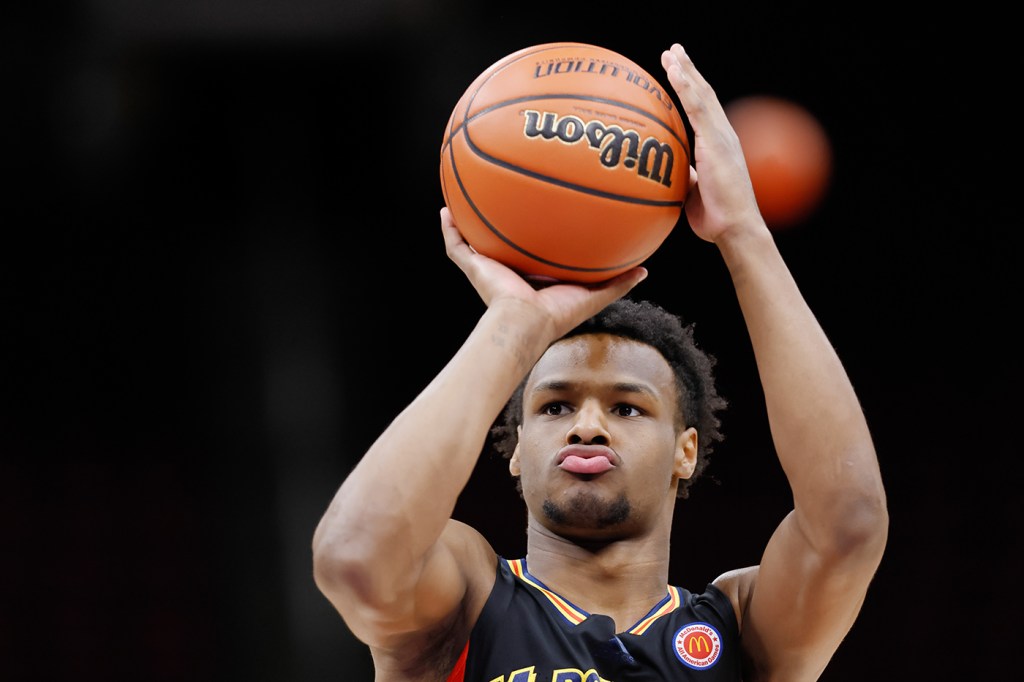Bronny James, son of LeBron James, suffers cardiac arrest. What are his chances for recovery?

Bronny James, the 18-year-old son of NBA star LeBron James, suffered a cardiac arrest on Monday while practicing with his University of Southern California basketball team in Los Angeles.
Early details of the medical emergency yielded promising news, according to Dr. Gian Corrado, head team physician for Northeastern athletics. On Tuesday, James’ parents revealed that their son had been moved out of the intensive care unit and was in stable condition.
His apparent quick recovery and transfer out of the ICU is “the No. 1 indicator” of a successful recovery, said Corrado. It also indicates that James, a 6-foot-3-inch guard, received quick attention from medical staff at the scene.
“It’s all about how quickly they get better,” Corrado says. “When somebody has a cardiac arrest and they lose blood flow to their brain, they undergo varying levels of mental status changes. They can be comatose, and the longer that they are comatose, the worse their prognosis.
“It is likely he was monitored in the ICU to make sure he didn’t have another event,” adds Corrado. “The faster they get better, the more it usually means that the medical team was on top of it immediately.”
In James’ case, it’s possible that his heart was “shocked back into a rhythm and he spent very little time without a life-sustaining heart rhythm,” Corrado says.
On Monday night in Massachusetts, Corrado was practicing with a medical team at the New England Patriots’ stadium to prepare for the possibility of an NFL player experiencing cardiac arrest during the upcoming season.
“It’s so important to have trained physicians who are on the sideline ready to do exactly what it sounds like was done here—getting his heart back into rhythm,” says Corrado, who serves as director of Emergency Sports Medicine at Massachusetts General Hospital in addition to his duties at Northeastern.
“The first thing a [medical] person would do is to recognize that this person was down,” Corrado says. “They would run out with an automatic external defibrillator, assess the player, and if there is no heartbeat, then they would use the defibrillator to shock the heart back into a life-sustaining rhythm. They would initiate CPR immediately as well.”
It can be difficult to predict cardiac arrest events, says Alain Karma, CAS Distinguished Professor and director of the Center for Interdisciplinary Research on Complex Systems at Northeastern.
“Sudden cardiac arrest kills about 300,000 people per year in the U.S.,” says Karma, a physics professor who investigates the basic mechanisms of cardiac arrhythmias. “There has been a lot of research to try to prevent it. But there are many different causes.”
James is probably too young to be experiencing a hardening of the arteries that can block blood flow, says Karma. But James could be suffering from an enlarged heart or an instability of the heart’s electrical system.
The heartbeat can be thrown out of rhythm by genetic abnormalities—known as channelopathies—that alter the function of proteins (ion channels) controlling the electrical activity of the heart, says Karma. In some cases those genetic abnormalities can suddenly create life-threatening heart rhythms, he says.
“While many channelopathies have been identified, there are still some that you cannot screen for,” says Karma, who notes that the increased availability of defibrillators probably helped James avoid a worse outcome.
“The availability of defibrillators in many public places—such as gyms and airports—has been a game-changer,” Karma says. “Prompt defibrillation can save the person.”
Though it is an unlikely event on a basketball court, James’ heartbeat may have been disrupted by a blow to the chest. Such a collision caused Buffalo Bills player Damar Hamlin to suffer cardiac arrest during an NFL game last season.
Hamlin offered prayers to Bronny James and his family in a tweet on Tuesday. “Here for you guys like you have been for me my entire process,” wrote Hamlin, who hopes to return to the field this season.
One year ago another USC freshman, Vincent Iwuchukwu, suffered cardiac arrest and was hospitalized. The 7-foot-1-inch center recovered and played in 14 games for USC last season.
LeBron James, 38, has predicted that he and his teenage son will play together on an NBA team after the upcoming season, when Bronny—ranked 20th nationally among high school seniors last year—will become eligible for the NBA draft.
Bronny’s parents revealed the news of their son’s hospitalization in a statement on Tuesday while offering their “deepest thanks and appreciation to the USC medical and athletic staff for their incredible work and dedication to the safety of their athletes.”
Corrado hopes that James’ event will raise awareness of potential heart issues among athletes.
“There needs to be much more education at all levels about the subtle signs of those folks who are at risk from a structural or electronics disorder with their heart,” says Corrado, who has researched the issue. “People can have a totally normal (medical) workup and still be at risk for this.
“There are on average two kids per state every year who die of a sudden death event,” Corrado says. “And nobody knows about it except for those in their family, their team and their community.”
Ian Thomsen is a Northeastern Global News reporter. Email him at i.thomsen@northeastern.edu. Follow him on Twitter @IanatNU.







